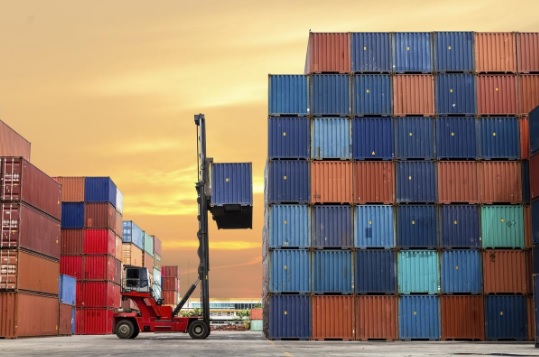| (Mains, General Studies Paper- 3: Infrastructure: Power, Ports, Roads, Airports, Railways etc.) |
Context
India’s logistics sector is growing rapidly, driven by rising investments, digital transformation and strong policy initiatives. The unique growth potential of the sector is reflected in the surge in private equity investments and the significant increase in warehouse capacity rates.
India’s Growing Logistics Sector

Momentum for Development of Logistics Hubs
- Currently, Chennai, Mumbai, Pune and NCR remain the major logistics hubs.
- Logistics park developers are actively exploring land acquisition opportunities to develop warehouses and fulfilment centres in these key markets.
- Currently, several multi-modal logistics park projects are being planned and developed under public-private partnerships.
- This will ultimately help in reducing transportation costs.
Adoption of Digital Twins
- With technological advancements, the adoption of ‘Digital Twins’ by the industry will help the logistics industry to optimize warehouse operations and inventory and supply chain management.
Growth of Quick Commerce
- Quick Commerce (Q-Commerce) platforms are revolutionizing the urban logistics ecosystem which is projected to grow rapidly in the next 2-3 years.
- This has significantly increased the demand for distribution centers in the city to improve faster delivery, inventory management and reduce transportation costs.
- Driven by intense competition, ‘Q-Commerce’ is expected to expand rapidly in automated warehousing as well as AI-driven personalization and non-grocery categories by 2025.
- Its main focus will be on faster delivery innovations to meet consumer demands which will positively impact the growth of the Indian warehousing and logistics sector.
Rapid growth of cold chain infrastructure
- India’s cold storage logistics requirement will grow rapidly in 2025 with growing organized retail chains, rapid growth of Quick Service Restaurants, overall incremental food consumption, last-mile delivery, farm-to-fork supply chain concept and pharmaceutical advancements.
- India is currently focusing on developing cold storage facilities at par with international standards. Many such facilities will be deployed in Tier 1, 2 and 3 cities by the end of this year.
Technology to improve operations
- The logistics sector is integrating technology at an unprecedented pace.The growing use of the Internet of Things (IoT) in 2025 is continuously increasing logistics efficiency by enabling real-time tracking of shipments and monitoring and control of perishable shipments.
- The adoption of robotics in inventory management and the use of blockchain in warehouse management will add new levels of safety, efficiency, and accuracy in the current year and beyond.
Initiatives focused on sustainability
- The Indian logistics industry is currently embracing changes on all fronts, away from traditional ones. This includes adopting sustainable practices to reduce carbon emissions, optimize packaging solutions, and reduce wastage.
- The use of renewable energy to power supply centers and warehouses, electric vehicle fleets for last-mile deliveries, establishing a circular economy in logistics operations, and large warehousing facilities are some of the important sustainability initiatives.
Specialised skill training
- In the last few years, there has been an increased focus on training the relevant workforce on supply chain and inventory management and adaptability to the use of technology.
- Skill development continues to be a key focus area for the government. This is reflected in the recent announcements in the Union Budget to set up five National Centres of Excellence for skill development that will impart industry-specific skills rather than general theory.
Contribution of logistics sector to GDP
- The warehousing and logistics sector contributes to around 13-14% of India’s GDP.
- The sector received 66% of private equity investments across all asset classes in the first half of 2024.
- Demand from third-party logistics (3P) players, e-commerce, retail businesses and manufacturing companies are continuously driving the demand for the logistics space.
- Industrial and logistics space capacity is expected to grow by around 25% year-on-year in 2024.
Challenges facing India's logistics sector
- Inappropriate intermodal transportation mix
- Intermodal transportation mix refers to the movement of goods using at least two different modes of transportation, such as trucks, ships, railroads and airplanes, without requiring handling of goods in transit.
- Supply chain inefficiencies
- Rising costs
Government efforts to improve logistics sector
- Government initiatives like PM Gati Shakti and National Logistics Policy will help to address the challenges faced by the logistics sector.
- The infrastructure sector has been given top priority in the Union Budget 2025-26 with public-private partnerships and greater support to the private sector in project planning.
- The budget also outlines upgradation of infrastructure and warehouses for air cargo handling.
Conclusion
With strong policy support, rising investments and technological advancements, India's logistics industry is experiencing a major transformational change. This will give companies investing in tech-enabled solutions, sustainability and workforce development a competitive edge in the sector.



